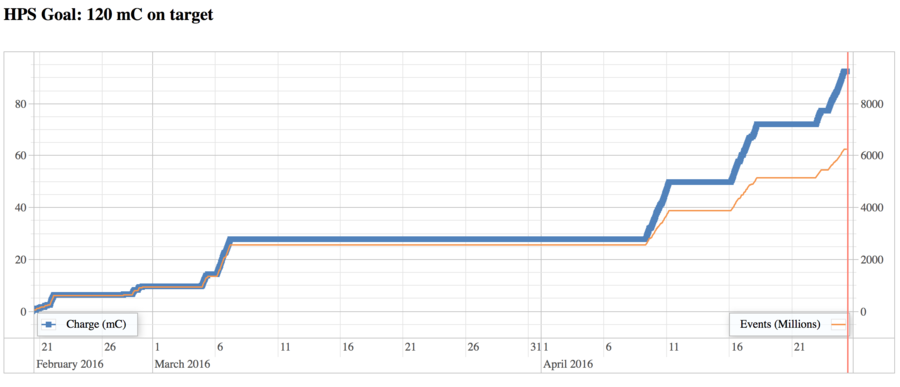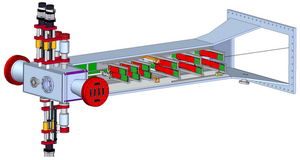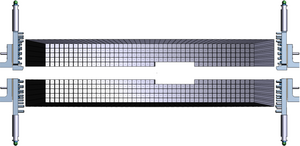Difference between revisions of "The HPS Run Wiki"
Jump to navigation
Jump to search
| Line 280: | Line 280: | ||
= Long Term Schedule = | = Long Term Schedule = | ||
<center><font size=2 color=red >Spring 2016 @ 2 GeV:</font><br></center>. | <center><font size=2 color=red >Spring 2016 @ 2 GeV:</font><br></center>. | ||
| − | [[Image: | + | [[Image:charge2016.png|center|900px]] |
{| {{TableStyle1}} | {| {{TableStyle1}} | ||
Revision as of 16:05, 4 March 2016
[edit]
Spring 2016 @ 2 GeV:
Spring 2015 Final @ 1 GeV:
Phone NumbersShift ScheduleShift-Taker's ChecklistHot CheckoutBeam Time AccountingRun Spreadsheet 2016, 2015 |
Procedures
|
Manuals |
JLab Logbooks
|
HPS 2016 run, February 4 to March 14, Weekends Only
Shifts are manned from Friday 2pm to Monday 7am
Beam energy 2.3 GeV (1 pass)
Important: Document all your work in the logbook!
RC: Nathan Baltzell
- (757) 575-7540
- 9 575 7540 from Counting Room
PDL: Harut Avakian
Run Plan for February 26 - 29, 2016:Start close-up of the Hall at 3pm on Friday, March 4
When hall reaches "Beam Permit", turn on the chicaneEstablish beam to the tagger dump
Bring beam to FC:
Miscellaneous Notes:
|
General Instructions:Locking up the hall on Fridays
Establishing Acceptable Beam Conditions:
|
Recovering from beam trips when running SVT at 0.5 mm:
| |
|---|---|
Every Shift:
|
Every Run:
|
.
|
|
| ||||||||||||||||||||||||||||||||||||||||||||||||||||||||||||||||||||||||||
.
|
Webcams:
|
Accelerator: |
Slow Controls:
|
Online & Offline: |
| System/Person | Pager/Phone Number |
|---|---|
| Run Coordinator | (757) 575-7540 (cell) |
| Physics Div. Liaison | (757) 876-1789 (cell) |
| MCC-OPS | 7048 |
| Crew Chief | 7045 |
| Crew Chief | 9-879-3367 (cell) |
| Program Deputy | 9-876-7997 (cell) |
| Gate House Guard | 5822 |
| DAQ/Online | (757) 869-2188 (cell) |
| SVT | (757) 541-7539 (cell) |
| ECAL | (757) 810-1489 (cell) |
| Slow Controls | (757) 748-6922 (cell) |
| Beamline | (757) 303-3996 (cell) |
| Engineering | (757) 748-5048 |
| Hall-B Floor | 5165 |
| Hall-B Space Frame | 5170, 5171 |
| Hall-B Forward Carriage | 5371 |
| Hall-B Counting Room | 5126, 5244, 5246, 5247 |
| Hall-B Gas Shed | 7115 |



